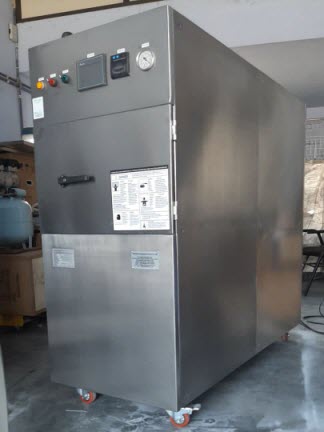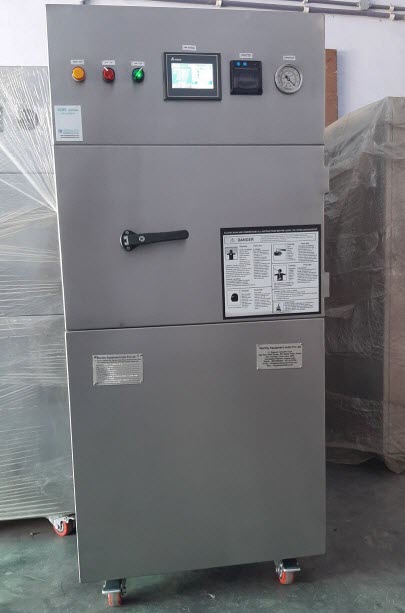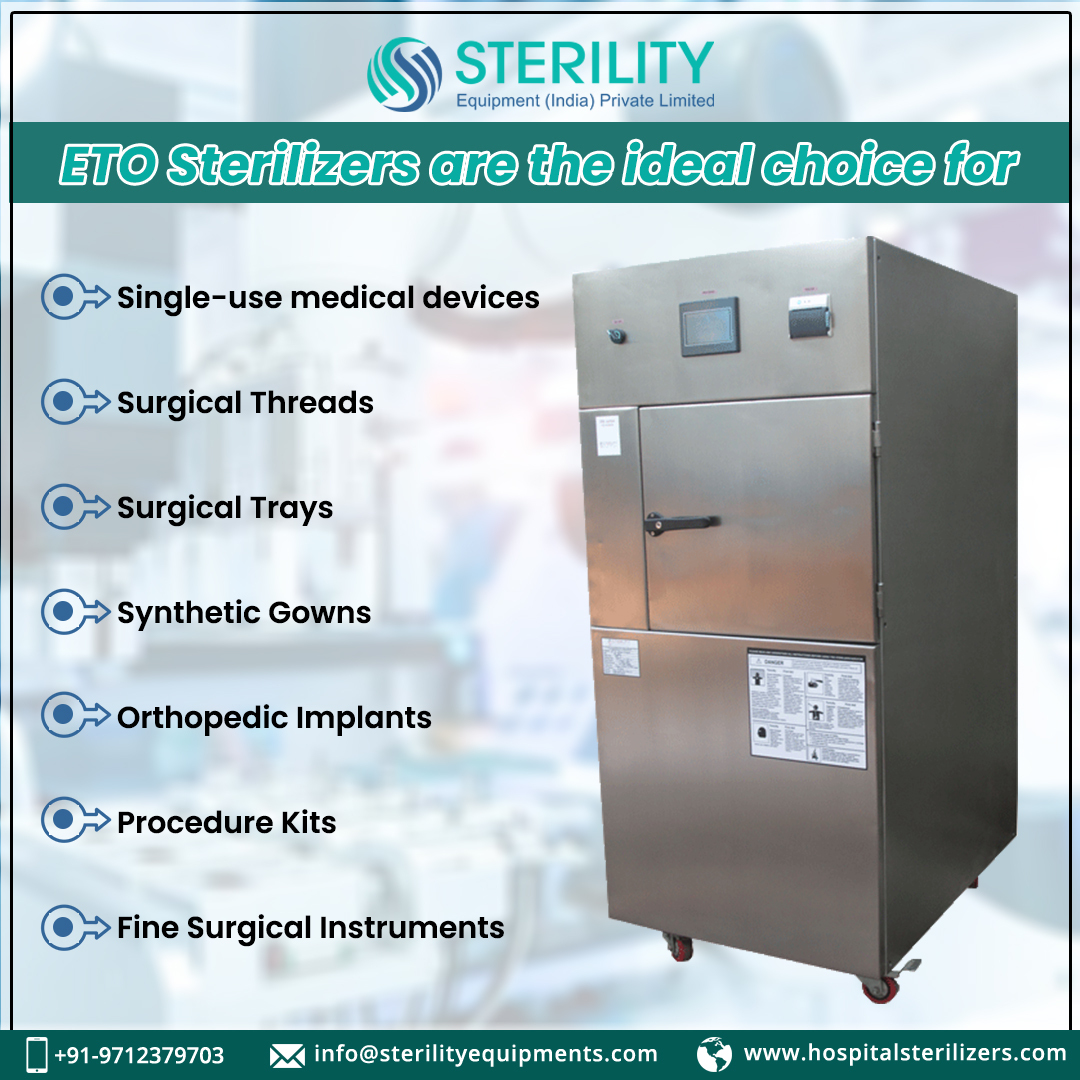Proper sterilization of complex medical equipment is of utmost importance in ensuring the safety of patients and maintaining infection control. Medical practitioners depend on efficient sterilization techniques to halt the spread of harmful pathogens and preserve the integrity of delicate instruments.
The primary reason for sterilizing complex medical equipment is to safeguard patient safety. Hospitals and healthcare facilities must maintain a sterile environment to protect patients from potential infections during medical procedures. Sterilization reduces the risk of cross-contamination and helps in controlling healthcare-associated infections (HAIs), leading to improved patient outcomes.
Complex medical equipment comes into direct contact with patients, making them susceptible to contamination with various pathogens. Proper sterilization eliminates harmful microorganisms, such as bacteria, viruses, and fungi, which can cause serious infections if not eradicated. By neutralizing these pathogens, medical professionals ensure that patients receive treatment without unnecessary risks.
Sterilization also plays a crucial role in preserving the integrity of delicate and sophisticated medical instruments. Many medical procedures require precise instruments that can be damaged by improper sterilization or harsh disinfection methods. By using appropriate sterilization techniques, healthcare providers can extend the lifespan of these instruments and maintain their accuracy and functionality.
Key Challenges in Sterilizing Complex Medical Equipment
Sterilizing complex medical equipment is a demanding task that healthcare facilities must tackle effectively to ensure patient safety and successful medical procedures. Several challenges arise due to the intricate design and delicate nature of the instruments involved. Addressing these challenges is essential for maintaining a sterile environment and preventing the transmission of infections.
Complex medical equipment often features intricate designs and delicate components that are challenging to clean and sterilize thoroughly. The presence of narrow channels, fine crevices, and complex geometries makes it difficult for traditional sterilization methods to reach and eliminate all pathogens effectively. Ensuring complete decontamination of these areas is crucial to prevent the risk of infections during medical procedures.
Modern medical equipment incorporates high-tech machinery and sensitive electronic components that may be susceptible to damage during sterilization. Some sterilization techniques involve high temperatures, which can harm delicate electronic parts or interfere with their functionality. Finding sterilization methods that preserve the integrity of electronic components is vital for the proper functioning of these devices.
Selecting the appropriate sterilization method for each type of complex medical equipment can be challenging. Some instruments may be sensitive to certain chemicals or temperatures, limiting the sterilization options available. Healthcare facilities must thoroughly assess the compatibility of each device with various sterilization techniques to ensure both effectiveness and safety.
Maintaining consistent sterilization results is crucial for the success of medical procedures and patient safety. Any inconsistency in the sterilization process can lead to the survival of pathogens on equipment surfaces, increasing the risk of infections. Ensuring uniform sterilization outcomes across all devices requires stringent quality control measures and regular equipment maintenance.

Overcoming Sterilization Challenges with Advanced Technologies
Advancements in sterilization technologies have revolutionized the way complex medical equipment is decontaminated, addressing the challenges posed by intricate designs and delicate components. By embracing cutting-edge techniques, healthcare facilities can enhance the sterilization process, improve patient safety, and streamline operations.
Low-temperature sterilization is a breakthrough technique that allows for effective decontamination of delicate medical instruments without subjecting them to high heat. This method utilizes various agents such as hydrogen peroxide, ozone, or ethylene oxide to achieve thorough sterilization at lower temperatures. It is particularly suitable for sensitive electronic components and instruments with complex geometries, mitigating the risk of damage during the sterilization process.
Advanced chemical disinfection involves using powerful yet safe chemicals to eliminate pathogens from medical equipment. This method ensures a high level of decontamination efficacy while being compatible with a wide range of medical instruments. It addresses the challenge of intricate designs and narrow channels, reaching areas that traditional sterilization methods may struggle to access.
Automated sterilization systems streamline the decontamination process by reducing the likelihood of human errors and variability in sterilization outcomes. These cutting-edge systems are equipped with advanced sensors and controls that optimize sterilization parameters for each specific medical instrument. Automated systems ensure consistent and reliable sterilization results, enhancing patient safety and reducing the burden on healthcare staff.
Implementing Best Practices for Sterilizing Complex Medical Equipment
Sterilizing complex medical equipment is a critical aspect of maintaining a safe and hygienic healthcare environment. To ensure optimal results and reduce the risk of infections, healthcare facilities must adhere to best practices in the sterilization process.
Regular maintenance of sterilization equipment is essential to ensure its proper functioning and effectiveness. Healthcare facilities should establish a scheduled maintenance program to inspect and service sterilizers, ensuring that they are in optimal condition. This proactive approach minimizes the risk of equipment failure and ensures consistent sterilization results.
Following the manufacturer’s guidelines for each medical instrument is crucial for effective sterilization. Manufacturers provide specific instructions on suitable sterilization methods, compatible disinfectants, and proper maintenance procedures. Healthcare facilities must strictly adhere to these guidelines to preserve the integrity of the instruments and maintain their warranty.
Conducting routine quality checks on the sterilization process is essential to verify its effectiveness. Facilities should implement a robust quality assurance program that includes regular testing of sterilized equipment to ensure that it meets the required standards of decontamination. These checks help identify any deviations or issues in the sterilization process promptly.
Adopting a multidisciplinary approach to sterilization involves collaboration among various departments and stakeholders. Involving infection control teams, biomedical engineers, and other relevant personnel ensures a holistic approach to sterilization practices. This collaboration fosters continuous improvement and facilitates the implementation of innovative sterilization techniques.
Accurate and comprehensive documentation of the sterilization process is vital for traceability and compliance. Healthcare facilities should maintain detailed records of each sterilization cycle, including equipment used, cycle parameters, and validation results. These records serve as crucial evidence of compliance during audits and provide insights for process improvement.
Ensuring Regulatory Compliance in Sterilization Processes
Regulatory compliance is of utmost importance in the sterilization of complex medical equipment to uphold patient safety and maintain industry standards. Healthcare facilities must adhere to guidelines and regulations set by reputable organizations like the Food and Drug Administration (FDA) and the Centers for Disease Control and Prevention (CDC). By prioritizing compliance and record-keeping, healthcare providers can ensure a seamless and compliant sterilization process.
The FDA and CDC establish comprehensive guidelines and recommendations for sterilization practices to ensure patient safety and minimize the risk of infections. Healthcare facilities must thoroughly understand and strictly adhere to these guidelines in their sterilization processes. Regularly monitoring updates and revisions to these guidelines is essential to stay up-to-date with the latest industry standards.
Regular validation of sterilization processes is essential to ensure that the chosen methods effectively decontaminate medical equipment. Conducting validation tests, such as biological indicators, ensures that the sterilization cycles achieve the desired level of efficacy. Integrating a robust quality assurance program helps identify and rectify any deviations in the sterilization process promptly.
Having a well-thought-out contingency plan is crucial for handling emergencies and unexpected situations that may disrupt the sterilization process. The plan should include alternative sterilization methods, equipment redundancy, and protocols for mitigating risks during emergencies. Being prepared ensures that the sterilization process remains compliant even in challenging circumstances.
Educating Healthcare Professionals on Sterilization Protocols
Education plays a pivotal role in promoting effective sterilization practices among healthcare professionals. Creating comprehensive training programs that cover the latest advancements, safety protocols, and best practices empowers staff to make informed decisions. Continuous learning and staying updated on emerging trends are crucial in maintaining a safe and sanitized medical environment.

Sterilization Packaging: Ensuring Product Integrity and Safety
Proper sterilization packaging is a critical component of the overall sterilization process for complex medical equipment. The right packaging materials and methods are essential for preserving the sterility of instruments during storage and transportation. By implementing suitable packaging practices, healthcare facilities can safeguard the integrity of medical instruments and prevent contamination, ensuring product integrity and patient safety.
Selecting appropriate packaging materials is crucial for maintaining the sterility of complex medical equipment. Packaging materials should be compatible with the chosen sterilization method and should effectively protect instruments from potential damage or contamination during storage and transit. Commonly used materials include medical-grade paper, pouches, wraps, and barrier films.
Properly packaged medical instruments should be handled with care to avoid compromising the sterility of the contents. Healthcare professionals should be trained to handle sterilized items gently, avoiding unnecessary contact or mishandling that could damage the packaging and compromise sterility.
Conducting regular audits of the sterilization packaging processes is essential to maintain compliance and optimize sterility maintenance. These audits ensure that packaging protocols are followed correctly, from choosing the right materials to properly sealing the pouches or wraps. Audits help identify any deviations or issues in the packaging process, allowing for prompt corrective actions.
Proper labeling of sterilization packages is essential for easy identification and traceability. Each package should be clearly labeled with the contents, sterilization date, and expiration date. Additionally, labels should indicate whether the package has undergone any additional sterilization steps or has been reprocessed.






